SUMMARY HIGHLIGHTS
- The Kintetsu Rail Pass is a great rail pass to use for exploring Nara and Mie prefectures.
- I saved a total of JPY 6,990 on transportation and admission with the 5-Day Pass Plus.
When it comes to the Kansai region, Osaka and Kyoto get most of the attention. This is unsurprising since they’re two of the most promoted destinations in the region. While all that attention is well-deserved, it does come with a caveat – both cities have become painfully touristy and crowded.
As much as I love Osaka and Kyoto, the overtourism problem can make visits less enjoyable. Fortunately, rail passes like the Kintetsu Rail Pass make it easy to escape the crowds and explore lesser-known destinations in the region.
In this article, we’ll discuss what the Kintetsu Rail Pass is, where it can take you, and how much it can potentially save you.
EXPLORE KANSAI QUICK LINKS
To help plan your trip to the Kansai region, I’ve compiled links to recommended tours, experiences, and other travel-related services here.
KINTETSU RAIL PASS
You can purchase a Kintetsu Rail Pass on Klook.
EXPERIENCES
- Nara: Nara Half Day Trip Walking Tour
- Yoshino: Private Guided Mountain Hiking Tour
- Ise: Ise-Shima Tour
- Osaka: Osaka Local Foodie Tour in Dotonbori and Shinsekai
- Kyoto: Kyoto Sake Brewery & Tasting Tour in Fushimi
- Nagoya: Nighttime Tea Ceremony With Optional Kimono Dressing
OTHER SERVICES
GUIDE TABLE OF CONTENTS
WHAT IS THE KINTETSU RAIL PASS?
The Kintetsu Rail Pass is a rail pass offering foreign tourists unlimited travel on trains (except limited express trains) by Kintetsu Railways. It covers travel to parts of Osaka, Kyoto, Nara, and Mie prefectures in the Kansai region, and to Nagoya in the Chubu region.
The pass comes in four versions – 1-Day, 2-Day, 5-Day, and 5-Day Plus. The longer the pass, the wider the coverage area (see maps below). It also offers unlimited travel on local buses in designated areas (except the 5-Day Pass), along with discounts and special benefits at select tourist attractions.
The validity period of the Kintetsu Rail Pass is based on consecutive calendar days, not 24-hour periods. So if you started using the pass at 11:30PM on January 1, then the end of its first day of validity will be at midnight on January 1.
As noted, none of the four versions of the pass include rides on limited express trains. If you want to ride one, then you’ll need to pay an additional limited express surcharge.
Listed below are the prices (May 2025) for the Kintetsu Rail Pass. You can purchase all four versions on Klook.
| 1-Day Pass | JPY 1,900 |
| 2-Day Pass | JPY 3,700 |
| 5-Day Pass | JPY 4,900 |
| 5-Day Pass Plus | JPY 6,700 |
The following maps* show the areas covered by each version of the Kintetsu Rail Pass. Pass holders can travel along these routes as often as they want within the validity period of their pass. Jump to the FAQs section of this guide for more information.
*Please note that the maps below are simplified versions to help you visualize available routes. You can visit the Kintetsu website for more detailed maps.
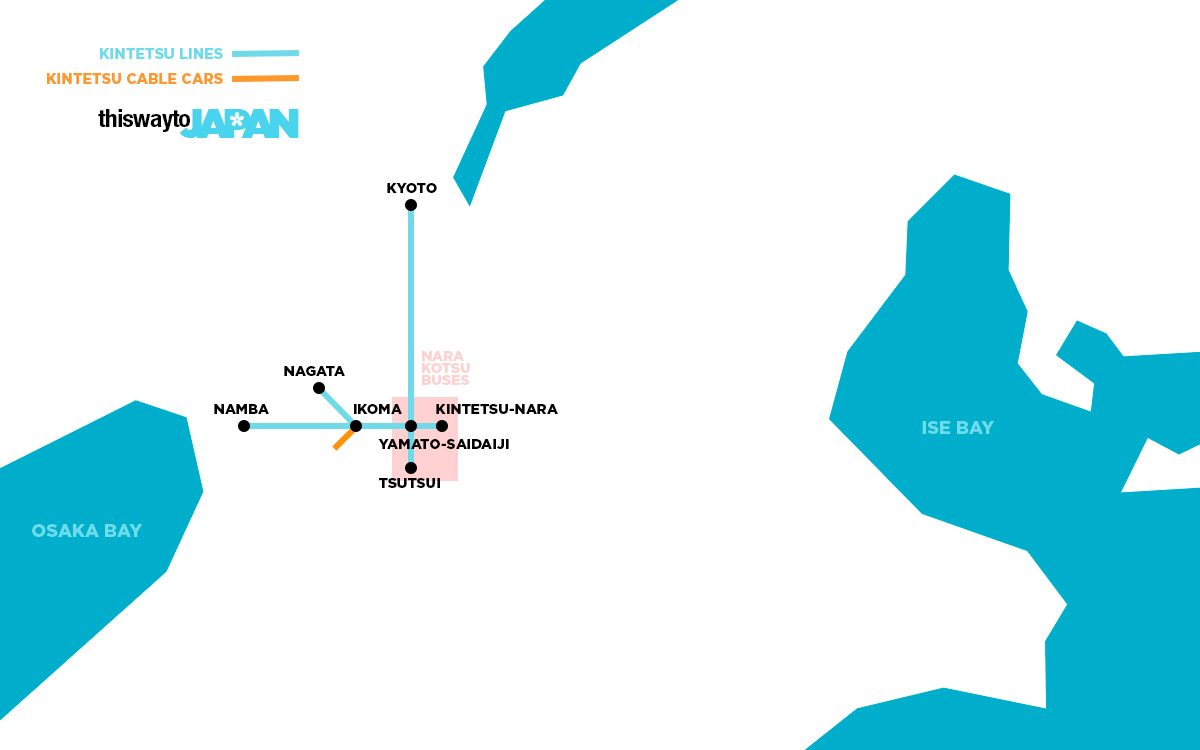
The 1-Day Pass covers train travel to parts of Osaka, Kyoto, and Nara. It also provides unlimited travel on the local bus network in Nara, along with discounts and special benefits at approximately 40 tourist attractions.
Click here to enlarge the map.
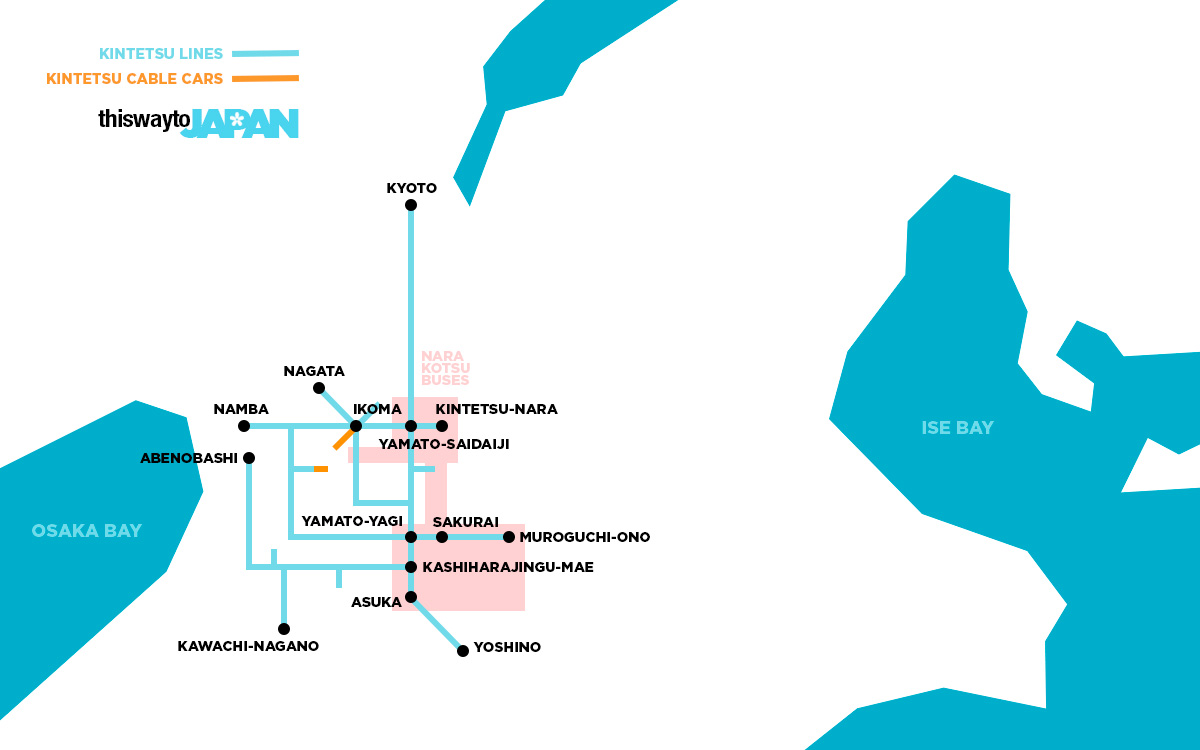
The 2-Day Pass covers train travel to parts of Osaka, Kyoto, and Nara. It also provides unlimited travel on the local bus network in Nara, along with discounts and special benefits at approximately 40 tourist attractions.
Click here to enlarge the map.
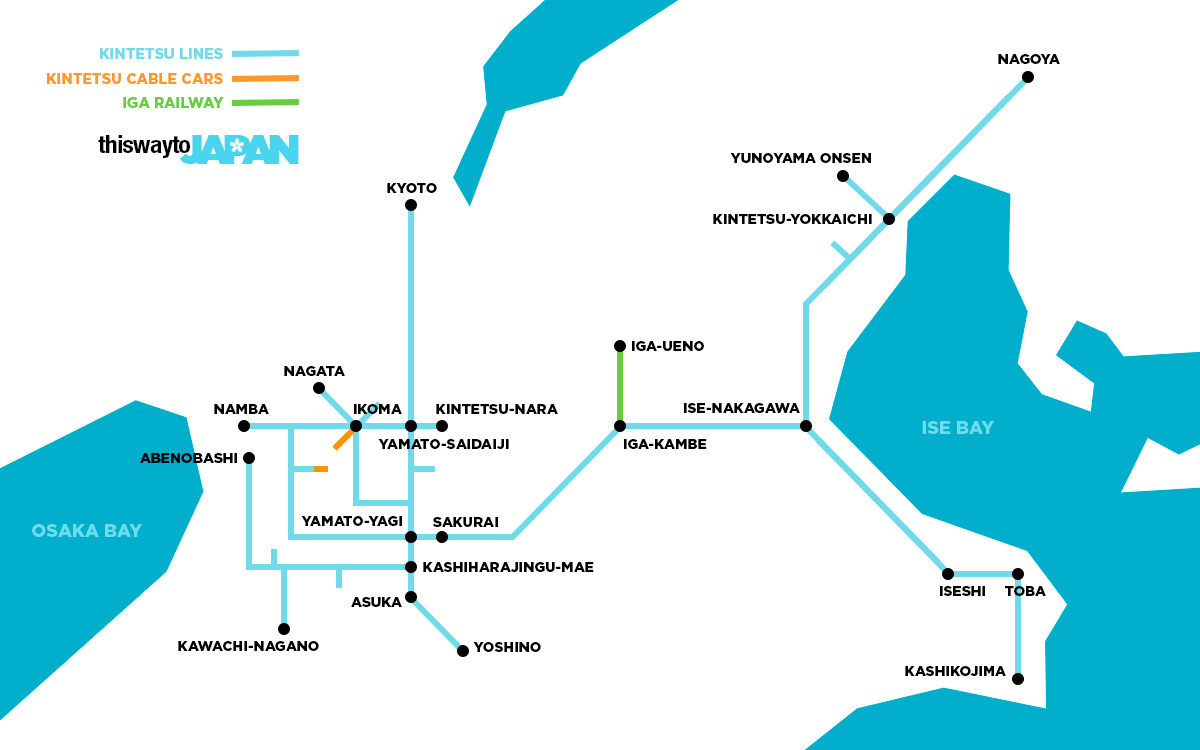
The 5-Day Pass covers train travel to parts of Osaka, Kyoto, Nara, and Mie prefectures in the Kansai region, and to Nagoya in the Chubu region. Pass holders are entitled to discounts and special benefits at approximately 70 tourist attractions.
Unlike the 5-Day Pass Plus, the 5-Day Pass doesn't include unlimited travel on the local bus network in Nara and Mie prefectures.
Click here to enlarge the map.
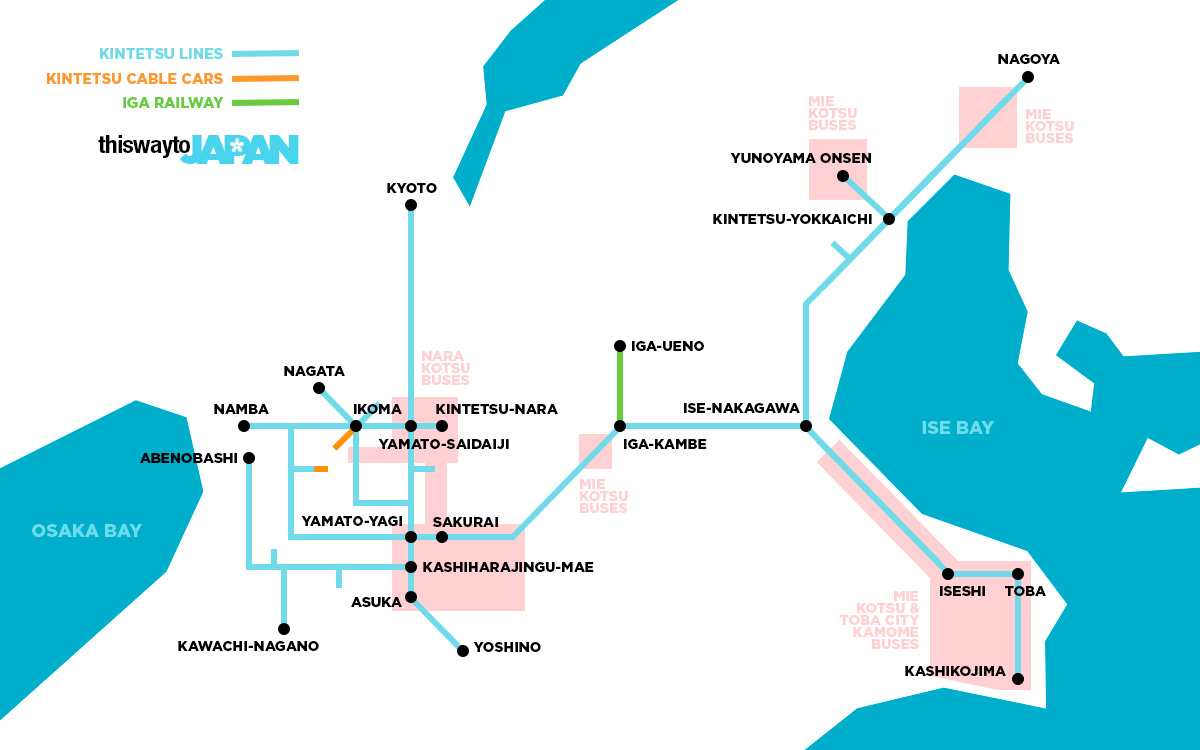
The 5-Day Pass Plus covers train travel to parts of Osaka, Kyoto, Nara, and Mie prefectures in the Kansai region, and to Nagoya in the Chubu region. It also provides unlimited travel on the local bus network in Nara and Mie prefectures, along with discounts and special benefits at approximately 70 tourist attractions.
Click here to enlarge the map.
PLACES TO VISIT WITH THE KINTETSU RAIL PASS
This isn’t a complete list but here are some of the most interesting destinations you can visit using the Kintetsu Rail Pass. Click on the tabs to switch between versions of the pass.
Namba
If you're interested in the 1-Day version of the Kintetsu Rail Pass, then you're probably staying in Osaka and want to do a day trip, either to Kyoto or Nara (or both). The Kintetsu rail network isn't extensive in Osaka so it isn't the ideal pass for exploring the city, but it is valid for travel to and from Namba Station.
Namba is the most exciting part of Osaka City and where many visitors spend most of their time in the city.
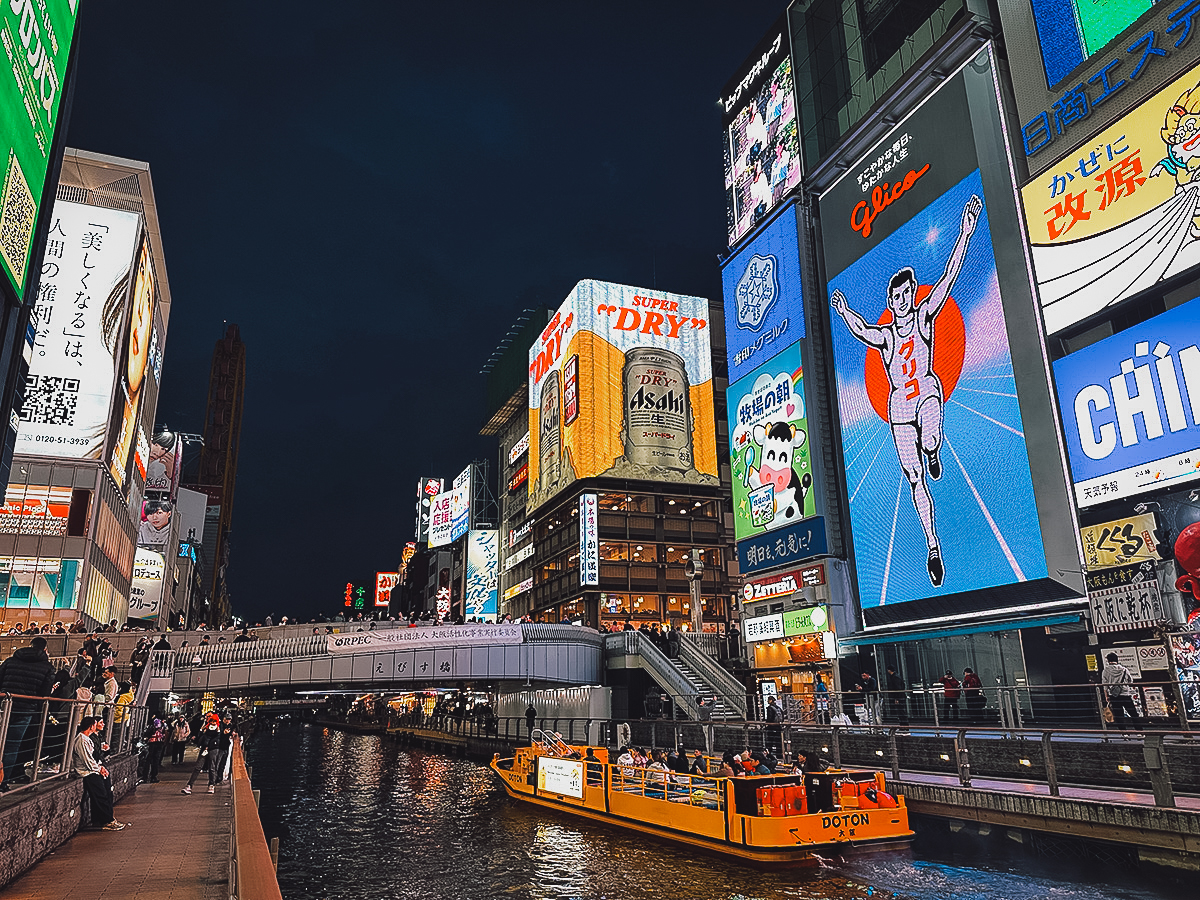
To-ji
The Kintetsu Rail Pass is valid for travel to Kyoto, but only until Kyoto Station and the southern parts of the city. Like Osaka, its scope is limited in Kyoto so it isn't the ideal pass to explore the city.
However, it can get you to a few points of interest in Kyoto, one of them being To-ji temple. Meaning "East Temple", To-ji is an important Shingon Buddhist temple and one of the many UNESCO World Heritage Sites in Kyoto.
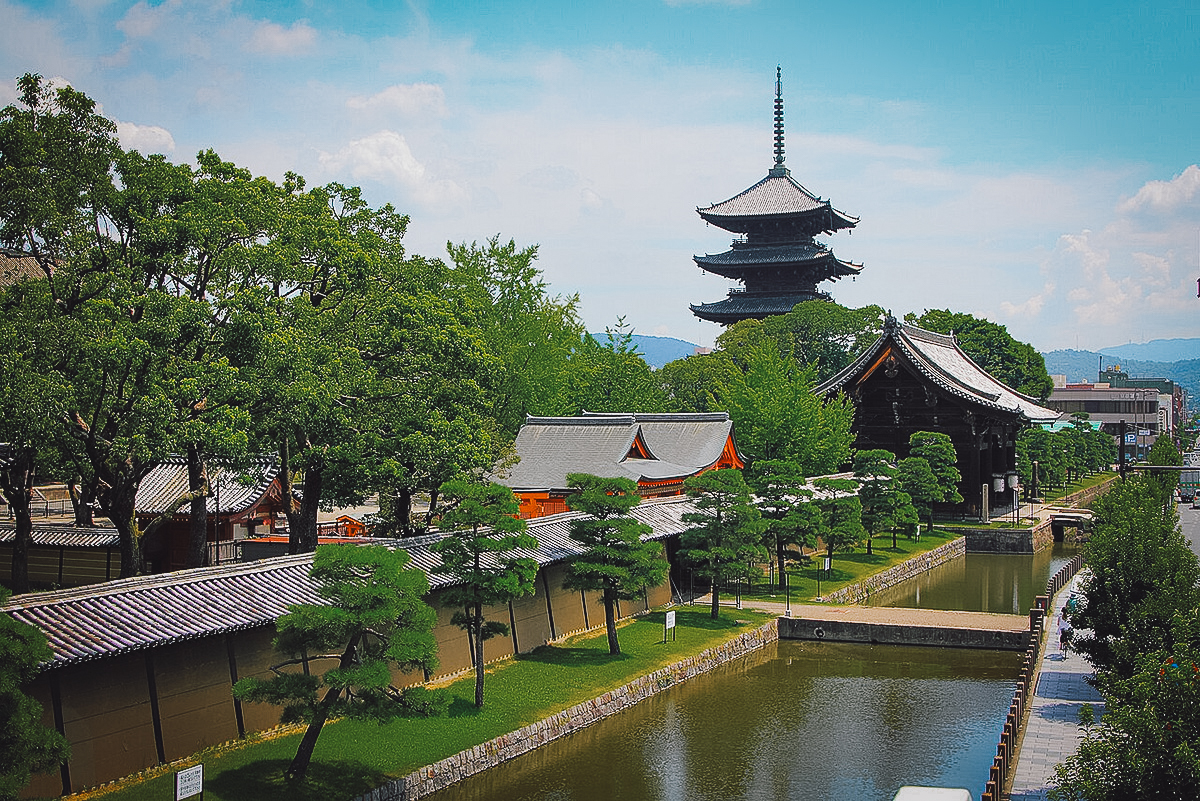
Photo by Kakidai, CC BY-SA 4.0, via Wikimedia Commons / Processed in Photoshop and Lightroom
Fushimi Sake District
Temples are the first things that come to mind when you think of Kyoto, but did you know that the city is known for its sake as well?
Fushimi Sake District is a traditional sake brewing district along the Horikawa River in Kyoto. It’s home to nearly forty breweries and is the second-largest sake district in Japan, behind only Nada in Kobe[1].
If you use your Kintetsu Rail Pass to visit Fushimi, then you may be interested in joining this sake brewery and tasting tour. It's a 3-hour tour that takes you to popular spots in Fushimi, including Gekkeikan, the second-largest sake brewery in Japan.
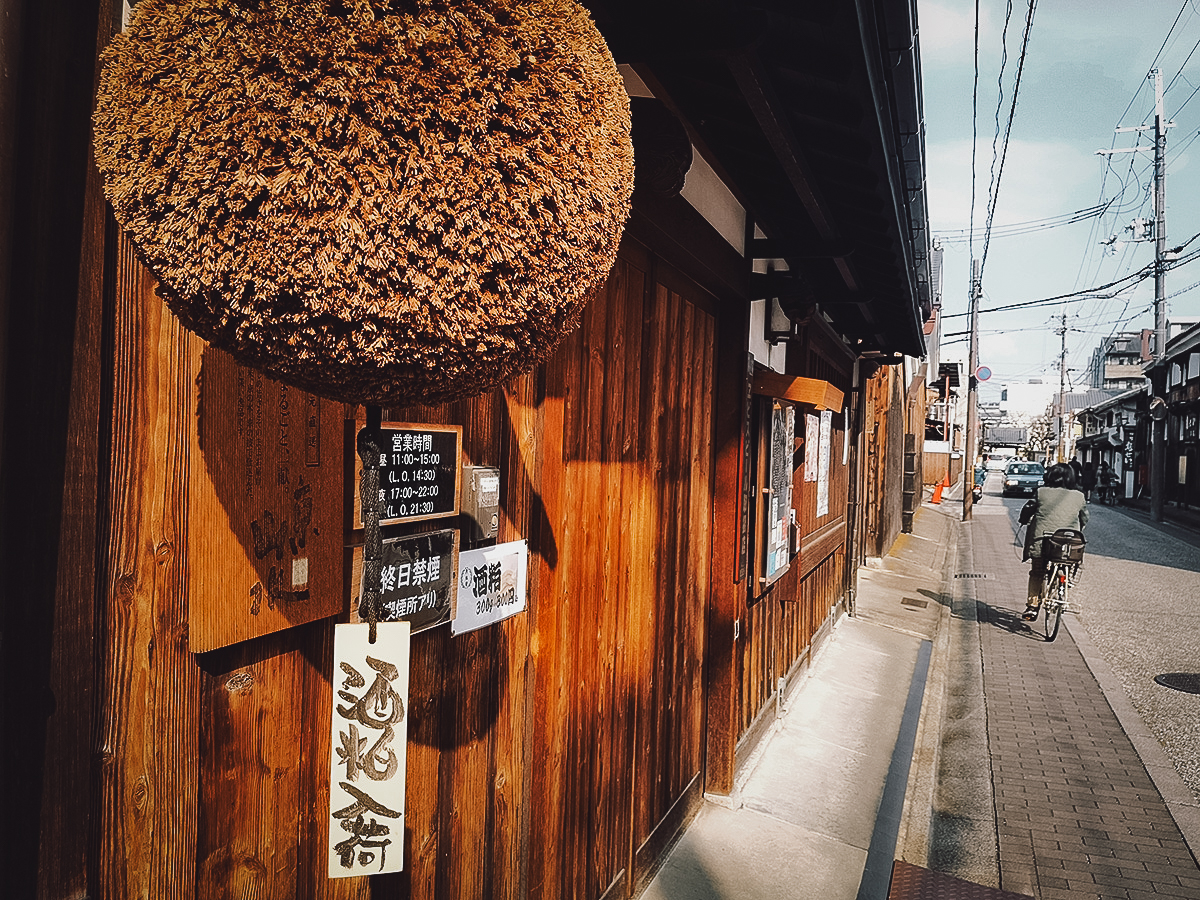
Nintendo Museum
Nintendo needs little introduction. It's one of the biggest and most influential video game companies in the world, responsible for producing iconic franchises like Super Mario, Pokemon, and the Legend of Zelda. If you're a fan of Nintendo, then you can use your pass to visit this museum that opened in Uji, Kyoto, in late 2024.
With Nintendo being the global giant that it is, tickets to the Nintendo Museum are a hot commodity and not that easy to get. You have to enter a lottery just for the opportunity to buy admission tickets! Unfortunately, I wasn't lucky on my first attempt, but you might be.
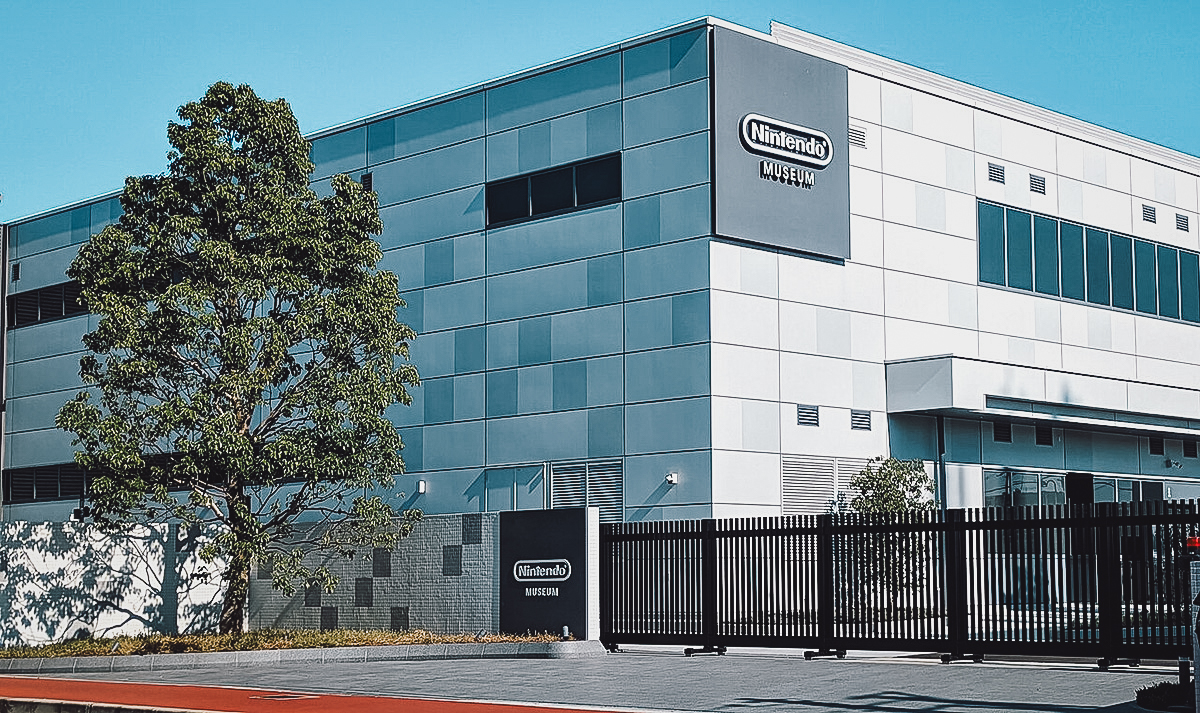
Photo by Nagomijirap, CC BY-SA 4.0, via Wikimedia Commons / Processed in Photoshop and Lightroom
Nara Park
Nara is home to hundreds of temples and shrines, not to mention over a thousand free-roaming sika deer. For this reason, I like to call it "Kyoto-light with deer". Many of the city's top tourist attractions are located in and around Nara Park, which is also where you'll find most of its deer. You can feed them with shika senbei crackers but do be warned that they can get quite aggressive with food.
A few years ago, Nara offered a quieter alternative to Kyoto but that no longer seems to be the case. Today, Nara Park seems every bit as busy and overcrowded as its more celebrated neighbor.
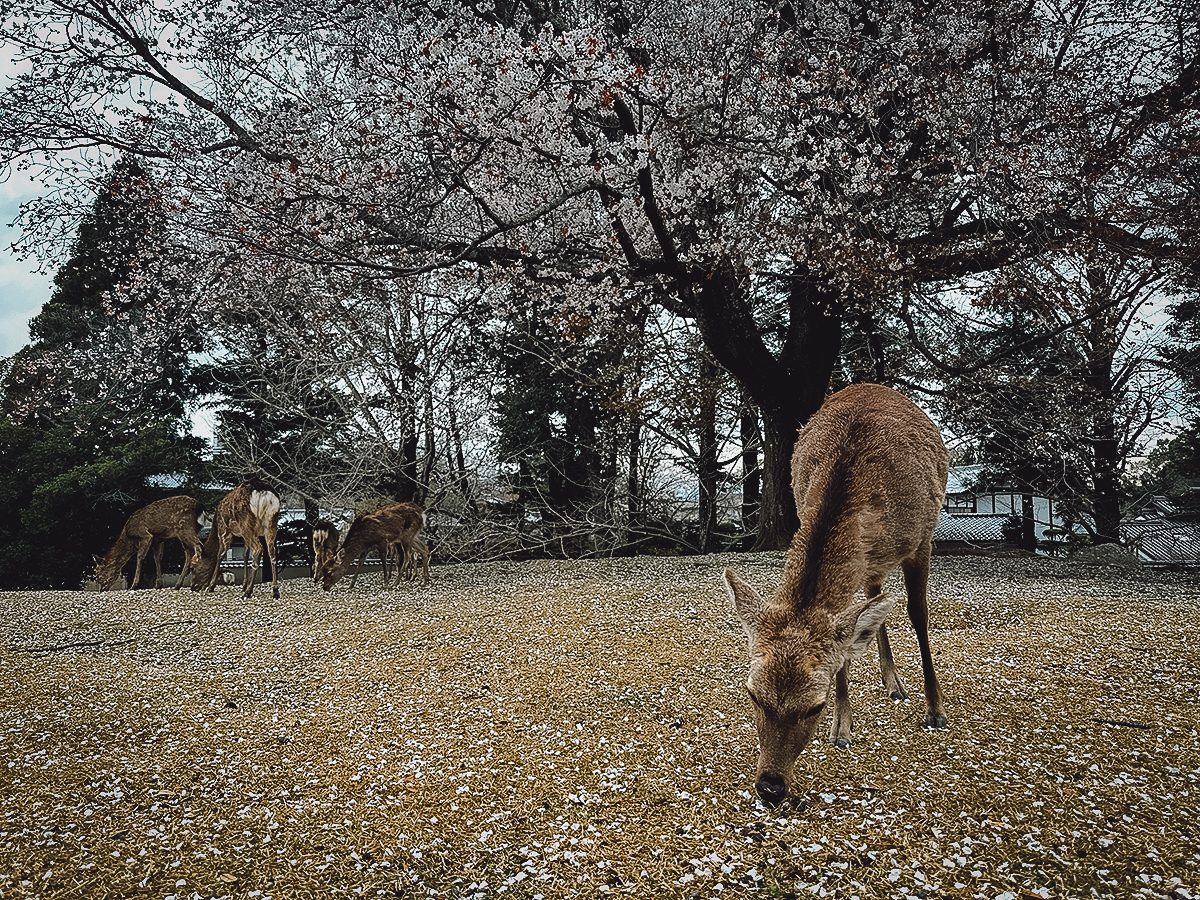
Namba
If you're interested in the 2-Day Pass, then you're probably looking to use Osaka as a base and take day trips to Kyoto and Nara. The Kintetsu rail network isn't as extensive in Osaka, but you can use the pass to travel to and from Namba Station.
The Kintetsu Rail Pass won't get you to other popular places of interest like Universal Studios Japan, Osaka Castle, and Umeda, so it's not the best pass to use if your goal is to explore Osaka. However, Namba is one of the most exciting parts of Osaka and where many visitors spend most of their time in the city.

To-ji
Like Osaka, the Kintetsu rail network in Kyoto is quite limited. It can only take you up to Kyoto Station, which isn't ideal for first-time visitors since the majority of the city's top tourist attractions are located north of its main transportation hub. The Kintetsu Rail Pass isn't ideal for exploring Kyoto but it can get you to a few attractions in the southern part of the city.
One of those attractions is To-ji, a UNESCO World Heritage Site and one of the most important temples in Shingon Buddhism.

Photo by Kakidai, CC BY-SA 4.0, via Wikimedia Commons / Processed in Photoshop and Lightroom
Fushimi Sake District
If you have an interest in sake, then the Fushimi Sake District is another destination you can visit in Kyoto. Located along the Horikawa River, it's a traditional sake brewing district that's recognized as the second-largest in Japan, behind only Nada in Kobe[1].
Fushimi is home to over forty sake breweries, including Gekkeikan, a large brewery that's been open since 1637[1]. You can visit Gekkeikan and other places of interest in Fushimi on this sake brewery and tasting tour.

Nintendo Museum
If you like video games, then a visit to the new Nintendo Museum in Uji, Kyoto is a must. Recently opening in October 2024, it's a hot destination that takes visitors through the company's storied history, starting from its humble beginnings as a toy maker producing playing cards in 1889[2].
It's easy to get to the Nintendo Museum using the Kintetsu Rail Pass, but getting in is another matter entirely. You can't just buy tickets at the door. To visit, you'll first have to win a lottery a few months before your trip, just for the chance to purchase entrance tickets!
Unfortunately, I wasn't lucky enough on my first attempt but I'll definitely try again.

Photo by Nagomijirap, CC BY-SA 4.0, via Wikimedia Commons / Processed in Photoshop and Lightroom
Nara Park
The vast majority of visitors to Nara go to Nara Park. It's home to many of the most important temples and shrines in Nara and over a thousand free-roaming sika deer. A visit to this area alone can take several hours as there's quite a lot to see and do here.
Half of the Historic Monuments of Ancient Nara, including Todai-ji and Kofuku-ji, are located in and around Nara Park. It's also home to landscaped gardens, museums, and many restaurants, cafes, and shops.
As interesting as the ancient monuments are, it seems the real stars at Nara Park are the sika deer that you can feed with shika senbei crackers. Just be careful when you feed them because some can get quite aggressive with food.

Yamanobe-no-michi
Many visitors to Nara confine their visits to Nara Park, but you can use the 2-Day Pass to visit more of the city and prefecture. If you like long walks, then you'll enjoy spending a few hours walking along the Yamanobe-no-michi trail, the oldest recorded road in Japan.
Yamanobe-no-michi is an easy and scenic hike that takes you through the Nara countryside. Stopping at a few temples and ancient burial mounds, it took me around five hours to complete the most popular section of the trail, which extends roughly 16 km (9.9 miles) between Isonokami Shrine in Tenri and Omiwa Shrine in Sakurai.

Imaicho
A few years ago, Nara offered a quieter escape from the crowds of Kyoto and Osaka but today, the area around Nara Park has gotten just as busy. It's becoming harder to get clean photos in Nara Park, but you can use the Kintetsu Rail Pass to travel to Imaicho, a well-preserved former merchant town less than an hour south of central Nara. When I visited, I was the only tourist there.
There isn't much to do in Imaicho, but if you're a photographer looking for an atmospheric backdrop for pictures minus the crowds, then Imaicho is a great place to visit.
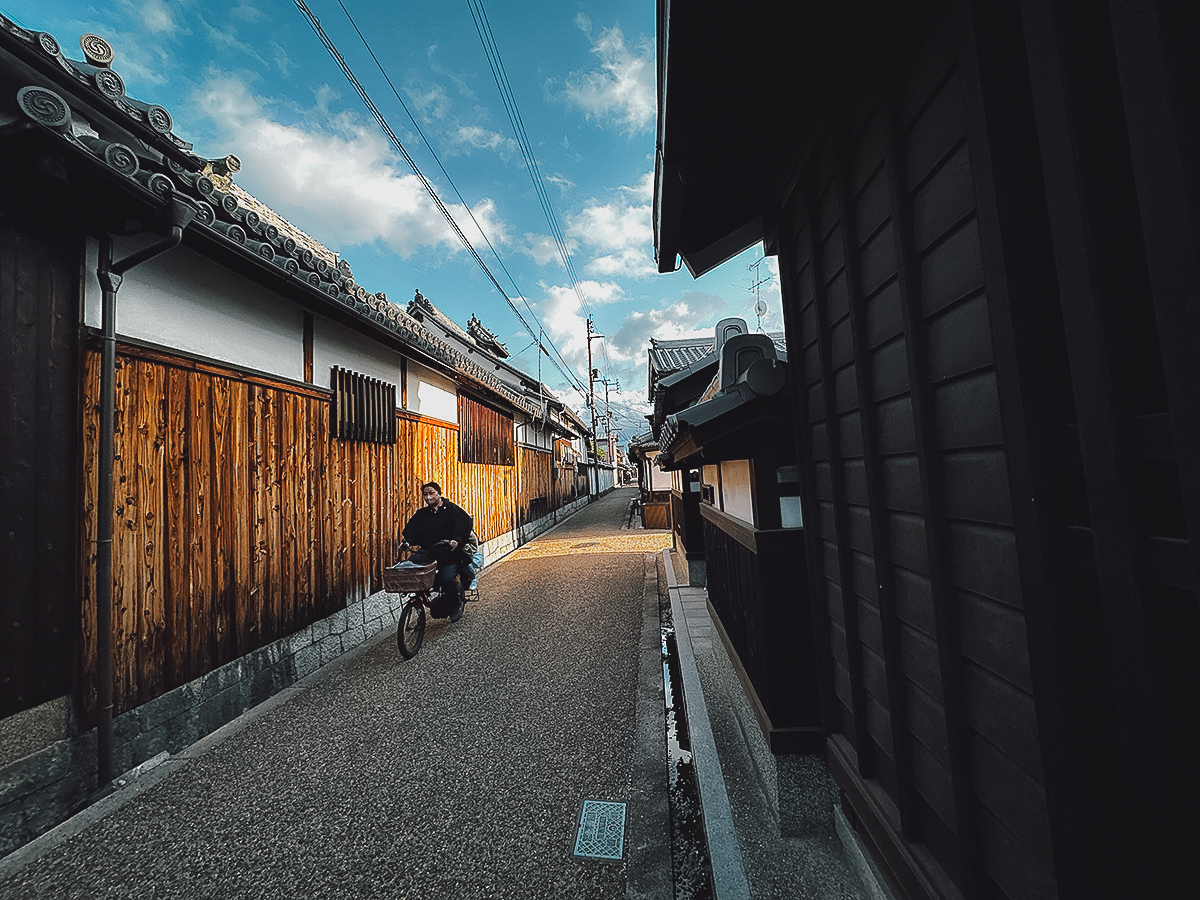
Hasedera
There are many temples and shrines you can visit in and around central Nara, but Hasedera is worthy of a special trip. Located in the mountains east of Sakurai, Hasedera is over 1,300 years old and serves as the head temple of the Buzan school of Shingon Buddhism[3].
Apart from its significance, what makes a trip to Hasedera special is its location. Situated in a valley, the temple complex consists of over thirty buildings built on the side of a mountain. I visited the temple just before peak cherry blossom season. The view from the top is breathtaking at any time of the year, but especially in the spring and fall during sakura and koyo seasons.
When you visit, be sure to set aside a few hours of your time as the temple complex is quite expansive. The small town at the base of the temple grounds is interesting as well and worthy of exploration.
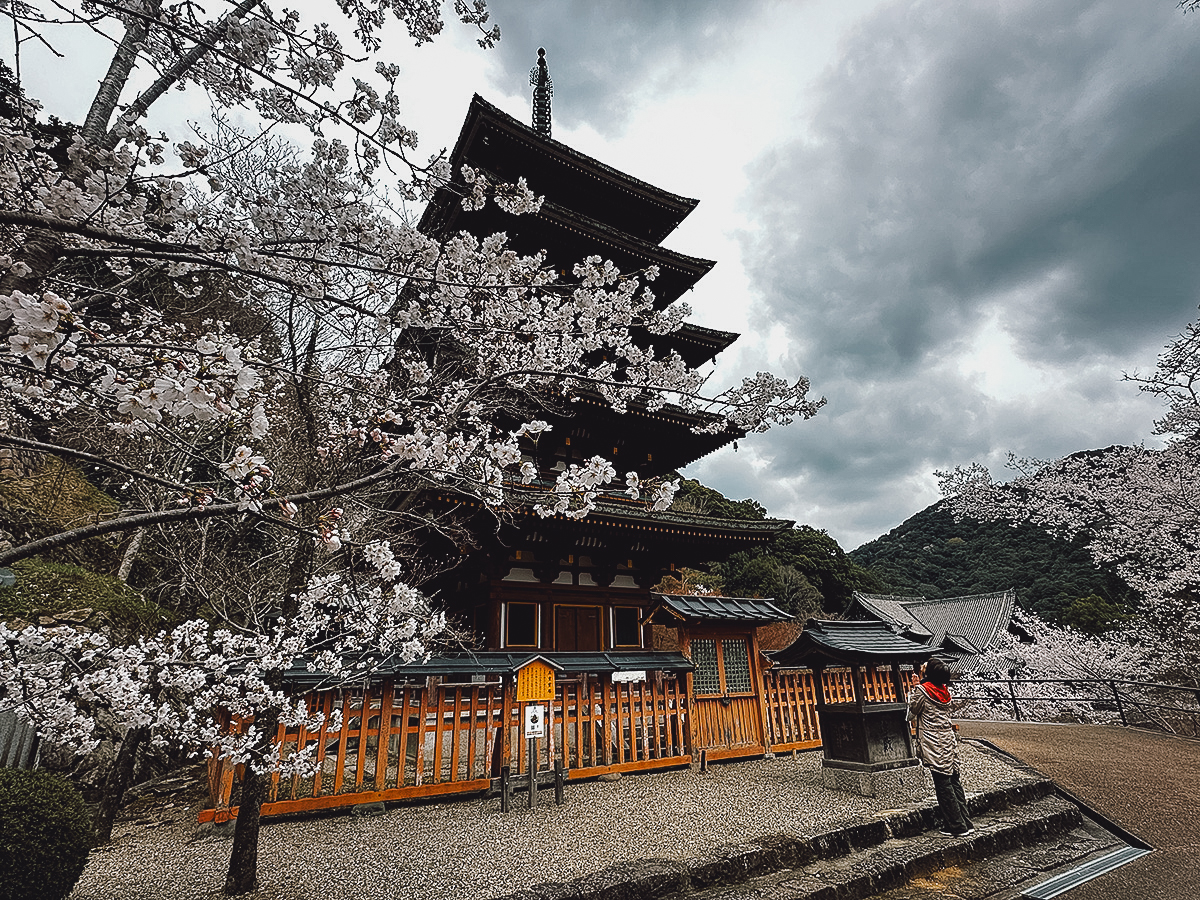
Yoshino
Ah, the unpredictability of cherry blossoms. I was confident I was visiting Yoshino at the perfect time but as it turned out, I arrived a week too early.
Mt Yoshino in Nara Prefecture is one of Japan's most famous cherry blossom spots. It's home to over 30,000 cherry trees planted on the slopes of the mountain. I'm not sure if you can tell from the picture below, but only about half the trees were blooming when I visited. In a week's time, more of the mountain would have been awash in shades of pink.
Aside from the cherry blossoms, this mountain town is home to a handful of temples and shrines, not to mention a few restaurants, shops, food stalls, and cafes. Sakura season is a special time to visit but Yoshino is worth a day trip at any time of the year. If you like, you can even visit on a guided hiking tour.
Together with Koyasan and Kumano Sanzan, Yoshino (and Omine) is a UNESCO World Heritage Site, collectively known as the "Sacred Sites and Pilgrimage Routes in the Kii Mountain Range"[4].
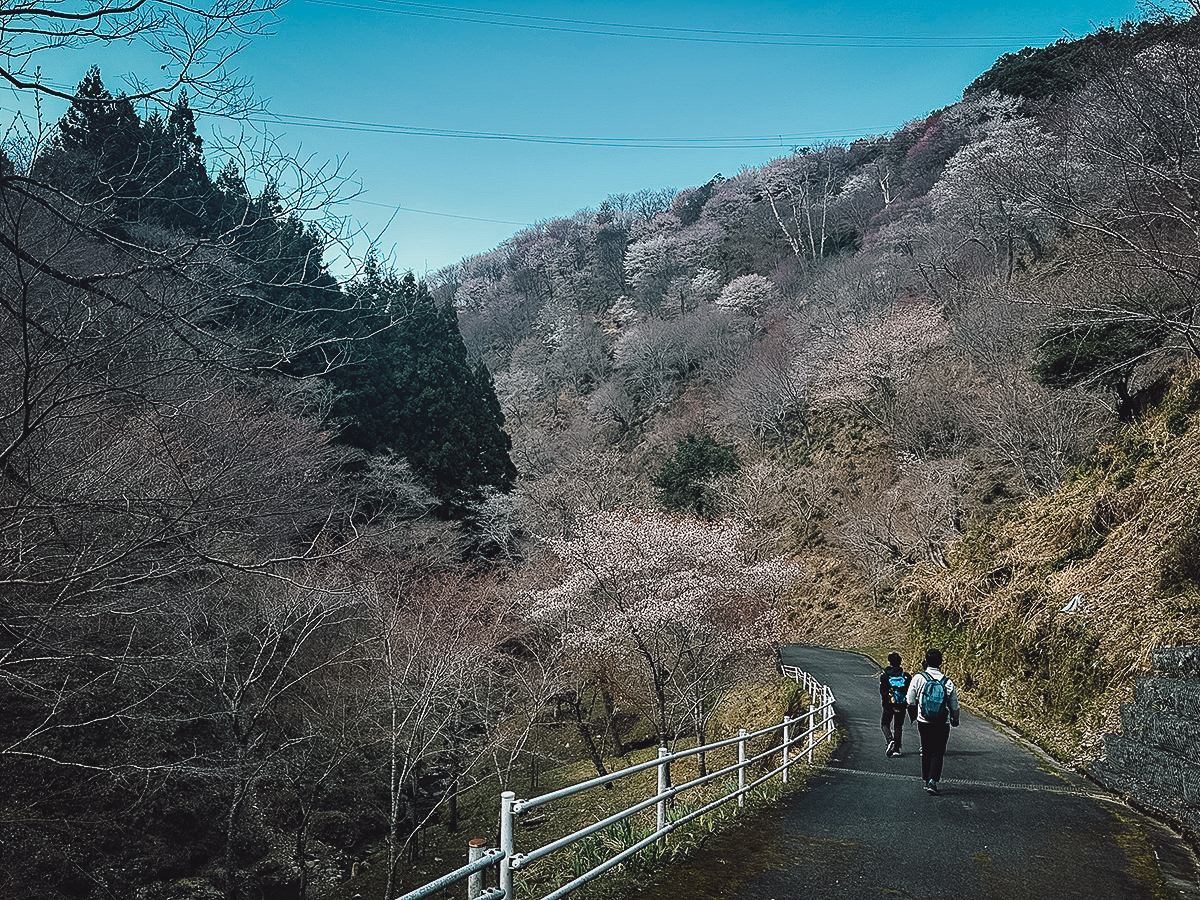
Osaka
Osaka is a common entry point into Japan and the Kansai region. If you land at Kansai International Airport (KIX) and have a Kintetsu Rail Pass, then your journey with the pass will probably start at Namba Station. Home to Shinsaibashi and Dotonbori Canal, Namba is the heart of the city and where many tourists spend most of their time in Osaka.
With five days at your disposal, it might seem like the Kintetsu Rail Pass is a good option for exploring Osaka, but it’s actually not the most suitable pass for getting around the city. The Kintetsu rail network isn't as extensive in Osaka as it only covers Namba and the southern and southeastern parts of the city and prefecture.
If you'd like to go beyond Namba and explore more of Osaka, then you'll need to pay for fares (or use an IC card) to visit Umeda, Universal Studios Japan, Osaka Castle, and other areas of interest in the city and prefecture.

Kyoto
The Kintetsu Rail Pass might seem like a good option for exploring Kyoto, but like Osaka, the Kintetsu rail network isn't as extensive here. It only goes as far as Kyoto Station and the southern parts of the city. Many of the city's top attractions – like Gion, Higashiyama, and Arashiyama – go beyond Kyoto Station.
If you plan on traveling to Kyoto with the Kintetsu Rail Pass, then you'll need to pay for fares (or use an IC card) to visit attractions not served by the Kintetsu rail network. Looking at a map, the only notable attractions I can see located near Kintetsu stations are Kyoto Tower, Fushimi Sake District (pictured below), To-ji Temple, and the Nintendo Museum.
Unless you've already been to Kyoto and are taking a day trip from Osaka to visit a specific destination – like the new Nintendo Museum in Uji – then the Kintetsu Rail Pass isn't the ideal pass for exploring Kyoto.

Nara
The Kintetsu Rail Pass is an excellent pass for exploring Nara. Unlike Osaka and Kyoto, the Kintetsu rail network is extensive in Nara and can get you to many key places of interest.
The majority of tourists confine their visits to the areas around Nara Park (pictured below). This is understandable, since it's home to half of the Historic Monuments of Ancient Nara and over a thousand free-roaming sika deer. But you can use your pass to see more of the city and prefecture.
Aside from the many temples beyond Nara Park like Yakushi-ji and Toshodai-ji, you can travel south to the well-preserved merchant town of Imaicho. Nara Park has gotten just as crowded as Kyoto and Osaka, but this charming district was practically deserted when I went. If you're looking for an atmospheric backdrop for photos minus the crowds, then Imaicho is a great place to visit.
You can also use your pass to travel to any point along the Yamanobe-no-michi trail, the oldest recorded road in Japan. It's an easy and scenic hike that takes you through the Nara countryside. It took me around five hours to complete the most popular section of the trail, which extends roughly 16 km (9.9 miles) between Isonokami Shrine in Tenri and Omiwa Shrine in Sakurai.

Hasedera
There are plenty of temples and shrines to explore in and around central Nara, but Hasedera is worth a special trip. Nestled in the mountains east of Sakurai, Hasedera is over 1,300 years old and stands as the head temple of the Buzan school of Shingon Buddhism[3].
What truly sets Hasedera apart – beyond its religious importance – is its stunning setting. Situated in a valley, the temple complex features over thirty structures built along the mountainside. I went just before peak cherry blossom season, which is one of the best times to visit, but the views from the top are breathtaking at any time of the year.
Be sure to give yourself a few hours to fully enjoy your visit, as the grounds are quite extensive. The small town at the base of the temple complex is also charming and well worth exploring.

Yoshino
Ah, the fickle nature of cherry blossoms. I thought I had timed my visit perfectly, but I ended up arriving about a week too early.
Mt Yoshino in Nara Prefecture is one of Japan’s most iconic cherry blossom spots, with over 30,000 sakura trees covering its slopes. From the photo below, you might notice that only around half of the trees were in bloom. Had I come a week later, the mountain would likely have been a sea of pink.
But Yoshino offers more than just cherry blossoms. This scenic mountain town is dotted with temples, shrines, restaurants, shops, food stalls, and cafes. While sakura season is an especially magical time to visit, Yoshino makes for a great day trip at any time of the year. Guided hiking tours are available if you’re up for an adventure.
Yoshino (and nearby Omine) is part of a UNESCO World Heritage Site, grouped with Koyasan and Kumano Sanzan as the "Sacred Sites and Pilgrimage Routes in the Kii Mountain Range"[4].

Iga Ueno
Have you ever wanted to dress up as a ninja or throw real ninja stars? If you have, then you need to visit Iga Ueno in Mie Prefecture. Together with Koka in Shiga Prefecture, it's known as the ninja capital of Japan.
Iga Ueno was home to one of Japan's leading ninja schools during the feudal era. Today, it preserves its ninja legacy through the Iga Ninja Museum (pictured below), a small but well-curated museum featuring ninja-related exhibits (with English translations), a ninja house (with trap doors!), live ninja shows, and the chance to use real ninja weapons like knives, blow darts, and shuriken.
The Ninja Museum is the main draw in Iga Ueno but it's home to other attractions as well, most notably Iga Ueno Castle and the memorial to Matsuo Basho, one of the most celebrated poets of Japan.
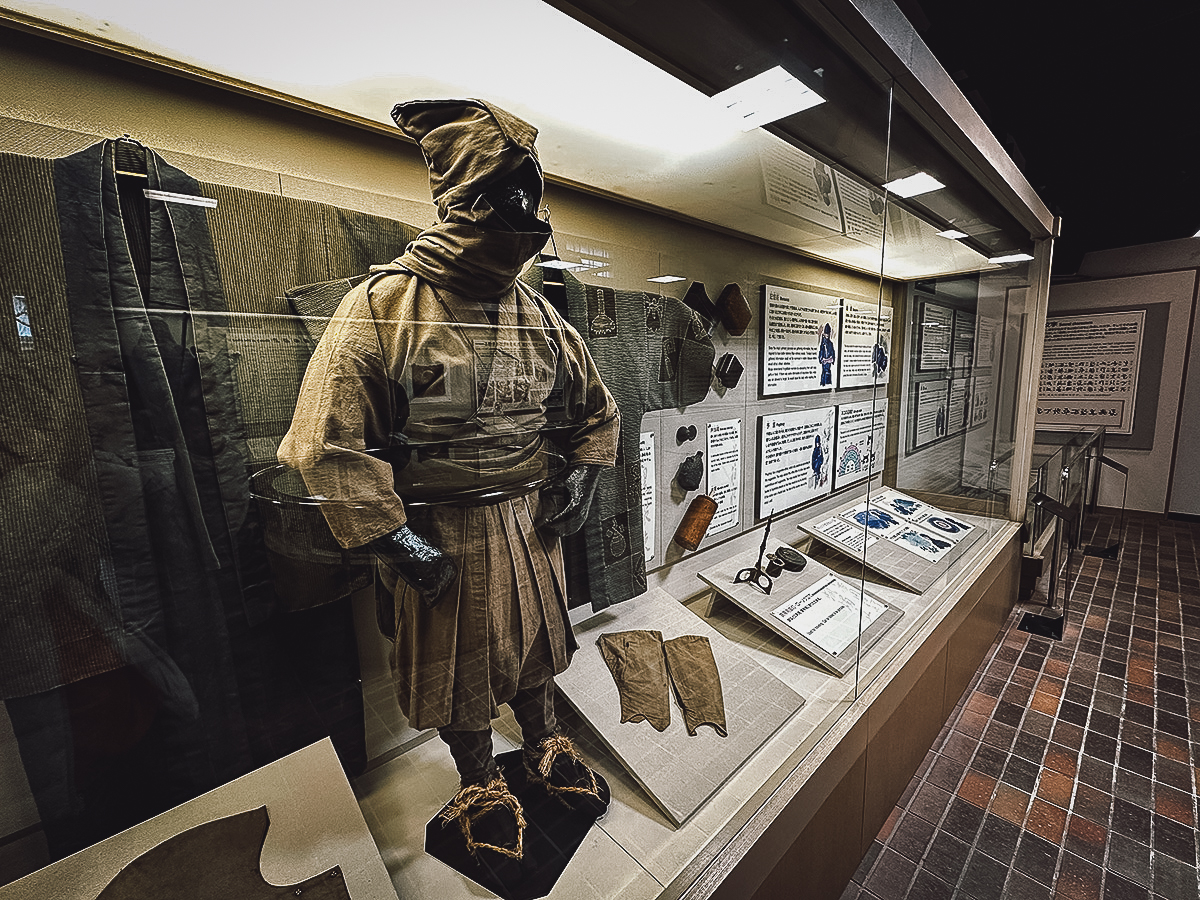
Ise
If Japan's religious monuments fascinate you, then a trip to Ise is a great way to maximize the value of your 5-Day Pass. There are countless temples and shrines throughout Japan, but Ise is home to Japan's most sacred Shinto shrines – Ise Jingu.
Located on the Shima Peninsula of Mie Prefecture, Ise Jingu consists of two main shrines – the Inner Shrine (Naiku) and the Outer Shrine (Geku). The Inner Shrine is especially revered because it's dedicated to Amaterasu Omikami, the mythological sun goddess and ancestor of the Imperial Family. Amaterasu is one of the most important deities in Shintoism and her direct link to Japan's emperors gives Ise great spiritual and political significance[5].
What makes a trip to the Inner Shrine even more eventful is Oharaimachi (pictured below), the traditional approach to Naiku. Similar to Nakamise-dori at Tokyo's Senso-ji, it's a lively 1-km street of traditional buildings housing dozens of restaurants, shops, and cafes.
The Outer Shrine is easy to visit using the 5-Day Pass, but the Inner Shrine is over 3 km (1.9 miles) from the nearest Kintetsu station. More accessible by bus, it'll be easier to get to using the 5-Day Pass Plus.
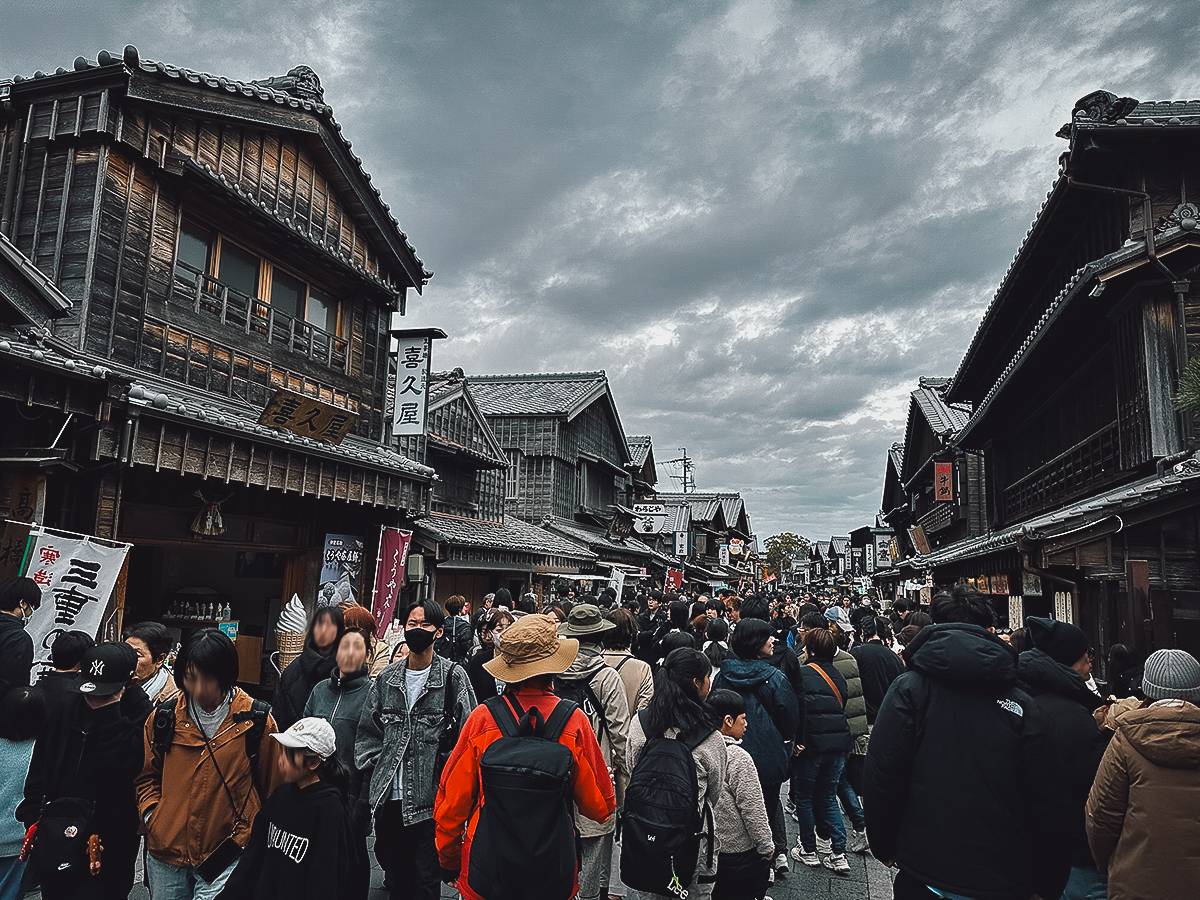
Toba
From Ise, make your way east on the Kintetsu-Toba line and you'll soon find yourself in the small coastal city of Toba. Toba is recognized as the birthplace of cultured pearls, thanks to the pioneering efforts of Kokichi Mikimoto[6].
Mikimoto successfully produced the world's first cultured pearl in 1893, on a small island just off the coast in Toba Bay. Today, the island has been renamed Mikimoto Pearl Island in his honor. It features a pearl museum, a restaurant, and a high-end shop offering a wide range of Mikimoto pearl jewelry. 5-Day Pass holders get a discount on admission so be sure to show your pass when purchasing an entrance ticket.
The pearl museum is interesting but most fascinating are the hourly performances by ama divers. Ama are female Japanese free divers (no scuba gear) who've been collecting seafood and pearls from the coastal waters of Toba for over 2,000 years[7].
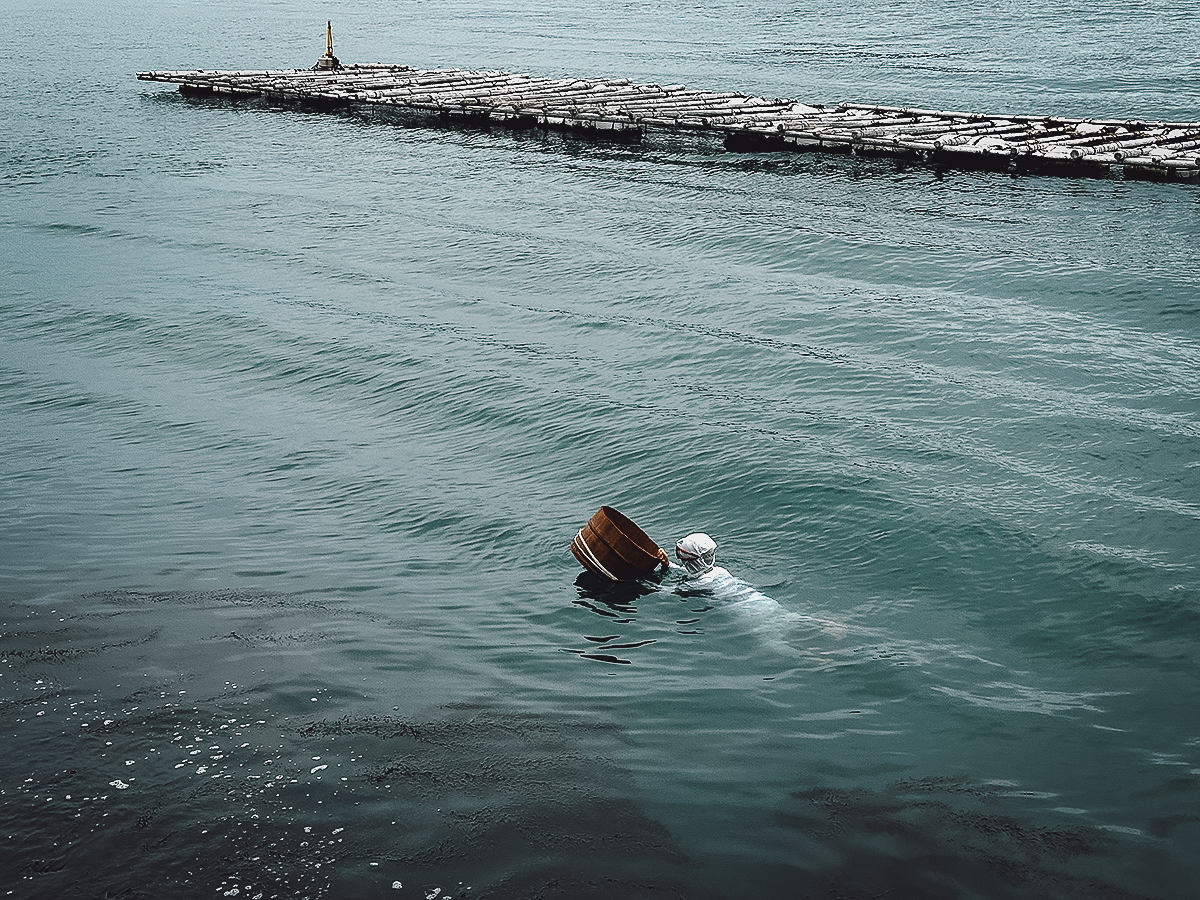
Ago Bay
After successfully cultivating the first cultured pearl, Mikimoto set up a pearl farm in Ago Bay. Located less than an hour south of Toba, Ago Bay features a rugged coastline with many small islands at the southern tip of Shima Peninsula.
1-hour sightseeing cruises on European-inspired vessels are the main draw here, which you can board from Kashikojima, the largest island in the bay. 5-Day Pass holders get a discount on sightseeing cruises so be sure to show your pass when purchasing a ticket.
To be honest, I found the cruise to be underwhelming so I took a train to Shima-Yokoyama Station and walked for around 45 minutes (each way) to Yokoyama Observation Deck (pictured below). The views of Ago Bay are much better from up here.
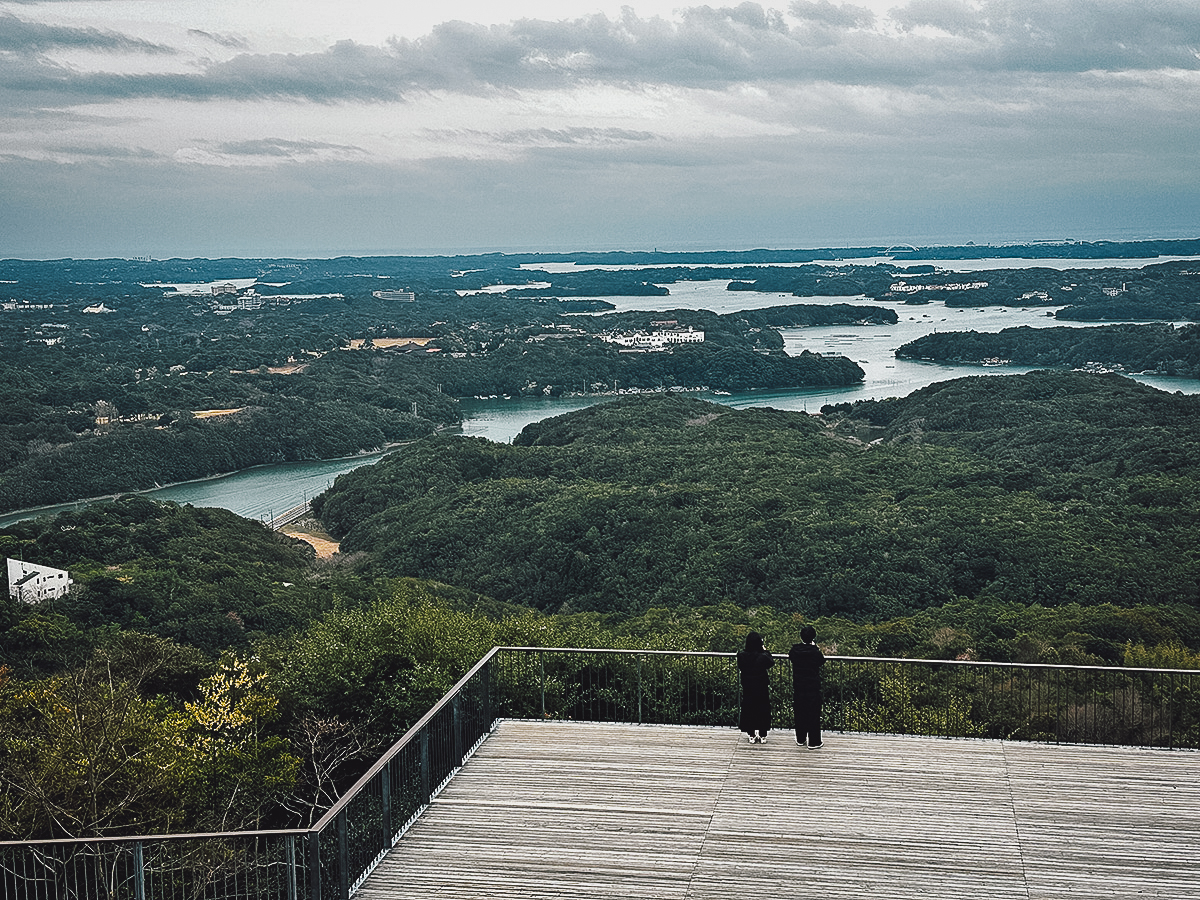
Yunoyama Onsen
If you're using the Kintetsu Rail Pass to travel to Nagoya, then you may want to make a quick detour and bathe in the hot springs of Yunoyama Onsen. Open for over a thousand years, it's a hot spring town located near Mt Gozaisho in Mie Prefecture.
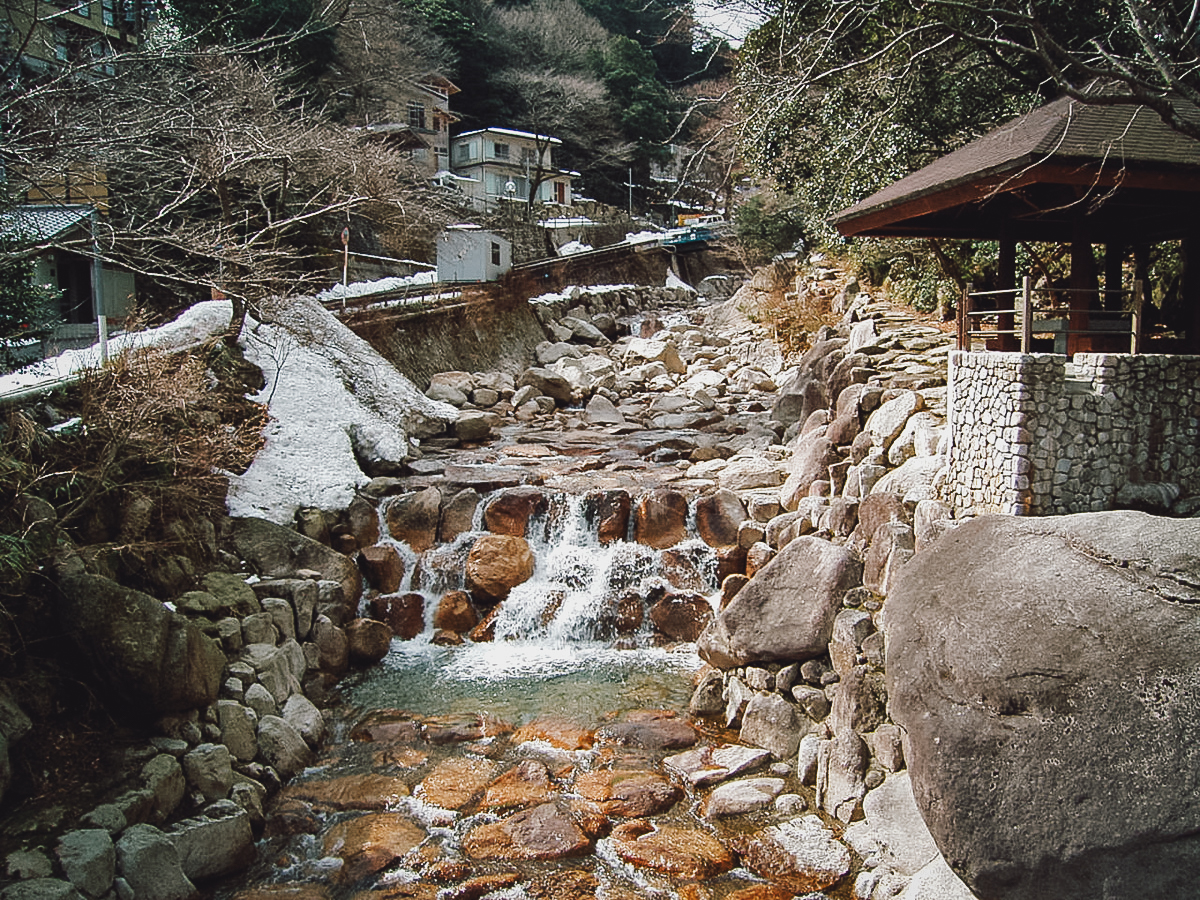
Photo by しんかわな, CC BY-SA 3.0, via Wikimedia Commons / Processed in Photoshop and Lightroom
Nagoya
Like Kyoto, the Kintetsu rail network is limited in Nagoya. The Kintetsu-Nagoya Line extends only until Nagoya Station, so it isn't an ideal pass for exploring Nagoya.
However, if your goal is to travel between the Kansai and Chubu regions, then making your way from Osaka to Nagoya (or vice versa) may be a good way of utilizing the pass. The one-way fare won't cover the cost of the 5-Day Pass, but you can make a number of sightseeing stops along the way to stretch its value.
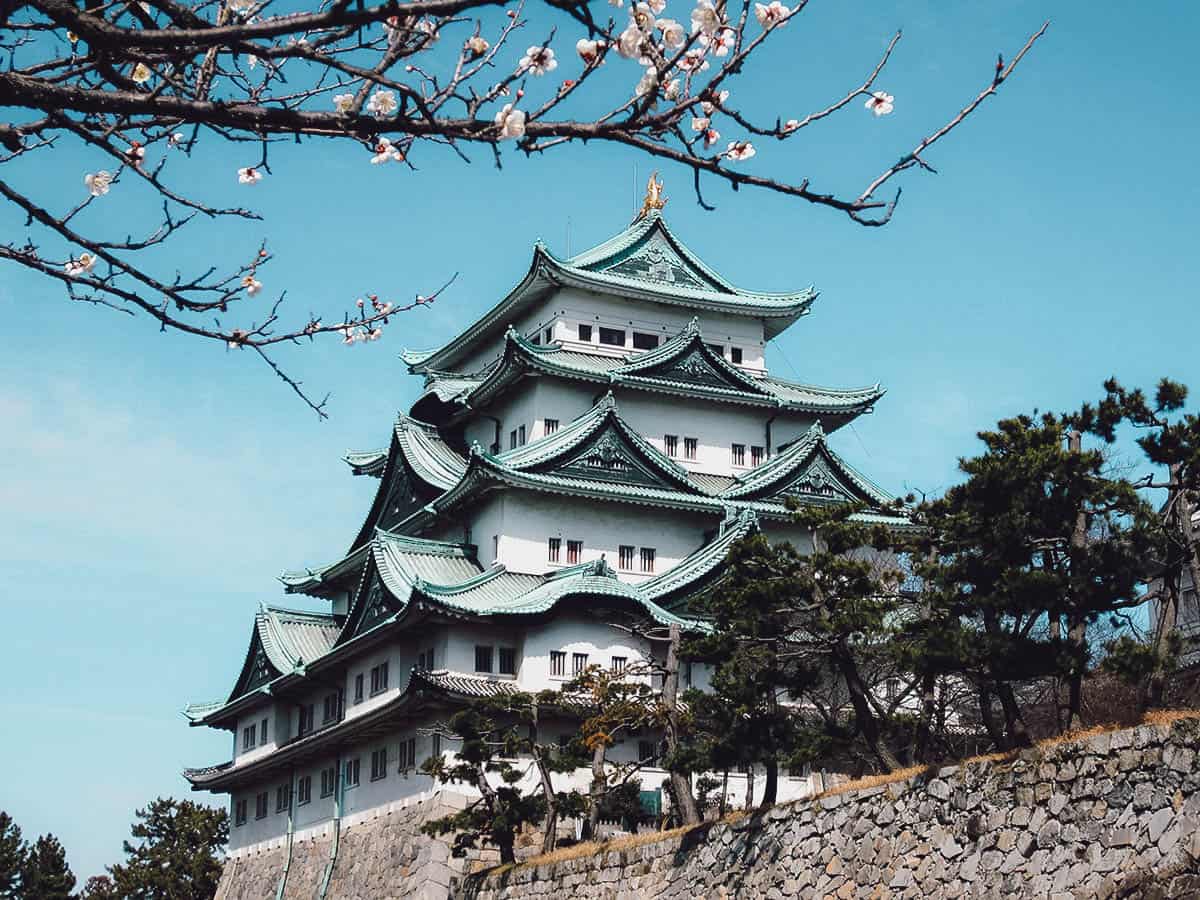
Photo by Tonic Ray via Shutterstock
Osaka
Osaka is a main gateway into the Kansai region. If you're arriving at Kansai International Airport (KIX) and have a Kintetsu Rail Pass, then your journey with the pass will most likely begin at Namba Station. Home to Shinsaibashi and Dotonbori Canal, Namba is the city's entertainment hub and where many tourists spend most of their time in Osaka.
While having five days may make the Kintetsu Rail Pass seem like a good choice for exploring Osaka, it isn’t the most suitable pass for getting around the city. Kintetsu’s network in Osaka is limited mainly to Namba and the southern and southeastern areas of the city and prefecture.
If you plan to explore more of Osaka and visit places like Umeda, Universal Studios Japan, and Osaka Castle, then you’ll need to pay separate fares (or use an IC card) as these destinations fall outside the Kintetsu rail network.

Kyoto
At first glance, the Kintetsu Rail Pass might seem like a convenient way of exploring Kyoto. But like Osaka, the Kintetsu rail network in Kyoto is fairly limited. While it does serve Kyoto Station and southern parts of the city, many of Kyoto’s key attractions – like Gion, Higashiyama, and Arashiyama – are beyond its reach.
If you plan on traveling to Kyoto with the Kintetsu Rail Pass, then you’ll need to cover additional fares (or use an IC card) to access popular sites not served by the Kintetsu rail network. Looking at a map, the only major attractions I can see located near Kintetsu stations are Kyoto Tower, To-ji Temple, Fushimi Sake District (pictured below), and the Nintendo Museum in Uji.
Unless you’ve already been to Kyoto and are targeting a specific attraction – like the new Nintendo Museum on a day trip from Osaka — then the Kintetsu Rail Pass isn't the best pass for exploring Kyoto.

Nara
The Kintetsu Rail Pass is a great pass for exploring Nara. Unlike Osaka and Kyoto, the Kintetsu rail network is extensive here and can get you to many key places of interest.
The majority of visitors tend to stick to the areas around Nara Park (pictured below), which makes sense. It’s home to over half of the Historic Monuments of Ancient Nara and over a thousand free-roaming sika deer. But the Kintetsu Rail Pass allows you to go beyond the park and see more of the city and prefecture.
You can visit noteworthy temples like Yakushi-ji, Toshodai-ji, and Horyu-ji, or venture south to Imaicho, a beautifully preserved former merchant town. Nara Park can get overwhelmingly crowded but Imaicho was quiet and almost empty during my visit, making it an ideal backdrop for photos.
You can also use the pass to access the Yamanobe-no-michi trail. It's the oldest recorded road in Japan and takes you on an easy and scenic hike through the Nara countryside. It took me around five hours to complete the most popular section of the trail, which extends roughly 16 km (9.9 miles) between Isonokami Shrine in Tenri and Omiwa Shrine in Sakurai.

Hasedera
While there’s no shortage of temples and shrines to visit in and around central Nara, Hasedera merits a special trip. Located in the mountains east of Sakurai, this temple is over 1,300 years old and serves as the head temple of the Buzan school of Shingon Buddhism[3].
What makes Hasedera especially memorable, aside from its spiritual significance, is its location. Situated in a valley, the temple complex consists of over thirty structures built into the mountainside. I visited just before peak cherry blossom season, which is one of the best times to go, but the views from the top are stunning at any time of the year.
The temple grounds are extensive so be sure to set aside a few hours to fully explore Hasedera. The small temple town at the base of the complex is also charming and well worth exploring.

Yoshino
This mountainside should have been awash in pink when I arrived, but as my luck would have it, I was a week too early. Such is the unpredictability of sakura season!
Located in Nara Prefecture, Mt. Yoshino is one of Japan’s most famous cherry blossom destinations, with over 30,000 sakura trees blanketing its slopes. As you can see in the photo below, only around half the trees were blooming during my visit. Had I gone a week later, the mountain would likely have been covered in a sea of pink.
As beautiful as they are, Yoshino has more to offer beyond its cherry blossoms. This picturesque mountain town is home to many temples and shrines, not to mention restaurants, shops, food stalls, and cafes. Cherry blossoms are the main draw in spring but Yoshino is well worth visiting at any time of the year. If you’re feeling adventurous, you can even join a guided hiking tour through the area.
Yoshino and neighboring Omine are part of a UNESCO World Heritage Site, known collectively with Koyasan and Kumano Sanzan as the "Sacred Sites and Pilgrimage Routes in the Kii Mountain Range"[4].

Iga Ueno
Ever dreamed of dressing like a ninja and throwing real ninja stars? I have, as a child, which is why a trip to Iga Ueno in Mie Prefecture was a must. Along with Koka in Shiga Prefecture, it’s recognized as the ninja capital of Japan.
Once the site of one of Japan’s most prominent ninja schools, Iga Ueno honors its ninja heritage at the Iga Ninja Museum (pictured below). It's a small but fascinating museum featuring ninja-related exhibits (with English translations), a traditional ninja house, live ninja demonstrations, and hands-on experiences with real ninja weapons like shuriken, blow darts, and throwing knives.
While the Ninja Museum is the highlight, Iga Ueno boasts other attractions as well, most notably Iga Ueno Castle and the memorial and museum dedicated to Matsuo Basho, one of Japan’s most renowned haiku poets.

Ise
If you’re intrigued by Japan’s religious monuments, then visiting Ise is a great way to get the most out of your 5-Day Pass Plus. You'll find temples and shrines throughout Japan, but Ise is home to the country’s most revered Shinto shrines – Ise Jingu.
Located on the Shima Peninsula in Mie Prefecture, Ise Jingu is made up of two principal shrines – the Outer Shrine (Geku) and the more venerated Inner Shrine (Naiku). The Inner Shrine holds special significance as it’s dedicated to Amaterasu Omikami – the sun goddess and mythical ancestor of Japan’s Imperial Family. Amaterasu is one of the most important deities in Shintoism and her ties to Japan’s emperors give Ise profound religious and political importance[5].
What makes a trip to the Inner Shrine even more memorable is Oharaimachi (pictured below), the historic approach leading to the shrine. Similar to Nakamise-dori at Tokyo’s Senso-ji, this lively 1-km stretch consists of traditional wooden buildings filled with restaurants, shops, and cafes.

Toba
From Ise, make your way east and you’ll soon arrive in the quiet seaside city of Toba. It's recognized as the birthplace of cultured pearls thanks to the groundbreaking work of Kokichi Mikimoto[6].
In 1893, Mikimoto successfully cultivated the world’s first cultured pearl on a tiny island in Toba Bay. Today, that island bears his name – Mikimoto Pearl Island – and features a well-curated pearl museum, an upscale jewelry shop, and a restaurant. 5-Day Pass Plus holders get a discount on admission so be sure to show your pass when purchasing an entrance ticket.
While the museum offers a fascinating look into pearl cultivation, the real highlight at Mikimoto Pearl Island is the hourly ama diver demonstrations. Ama are traditional female free divers (no scuba gear) who’ve been harvesting seafood and pearls in Toba’s waters for over two millennia[7].

Meoto Iwa
Meoto Iwa literally means "wedded rocks" and refers to these two sacred rocks bound together by a shimenawa rope. The rocks are located in the ocean near Futami-Okitama Shrine, on the way to Toba, and are meant to symbolize the union of the Shinto deities Izanagi and Izanami, the mythical couple who are believed to have created Japan[8].
You can make a quick stop at Meoto Iwa on the way to or from Toba. However, the nearest Kintetsu station is over 5 km (3.1 miles) away, so it's best to visit on a CAN Bus, which is operated by the Mie Kotsu Group and included in the 5-Day Pass Plus.
It's worth mentioning there is a rail station within walking distance of Meoto Iwa – Futaminoura Station – but this is operated by JR and inaccessible with the Kintetsu Rail Pass.
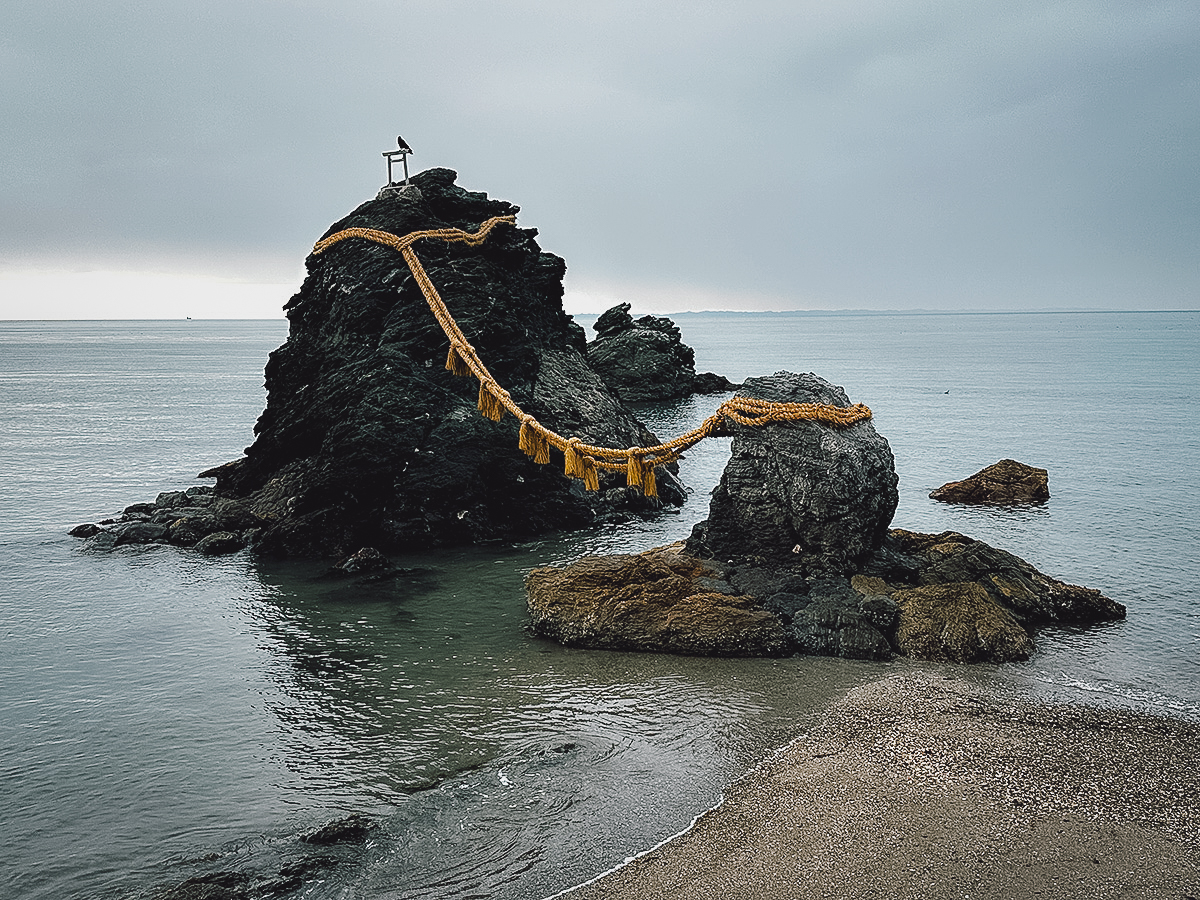
Matoya Bay
Watching the ama divers in action was cool, but enjoying a grilled seafood meal prepared by retired ama was special. Thanks to Hachiman Kamado, I was fortunate to enjoy this unique experience in Matoya Bay.
Ama diving is a dying tradition so it was nice to see these retired divers preserving their culture by offering this experience and sharing their stories with tourists. One of the ama was 93 years old and had been diving from the age of 8 until her retirement at 80. Wow!
You can book this experience through the Hachiman Kamado website. They provide a free shuttle bus from Toba Station but 5-Day Pass Plus holders can also go there on their own via the Toba City Kamome Bus.
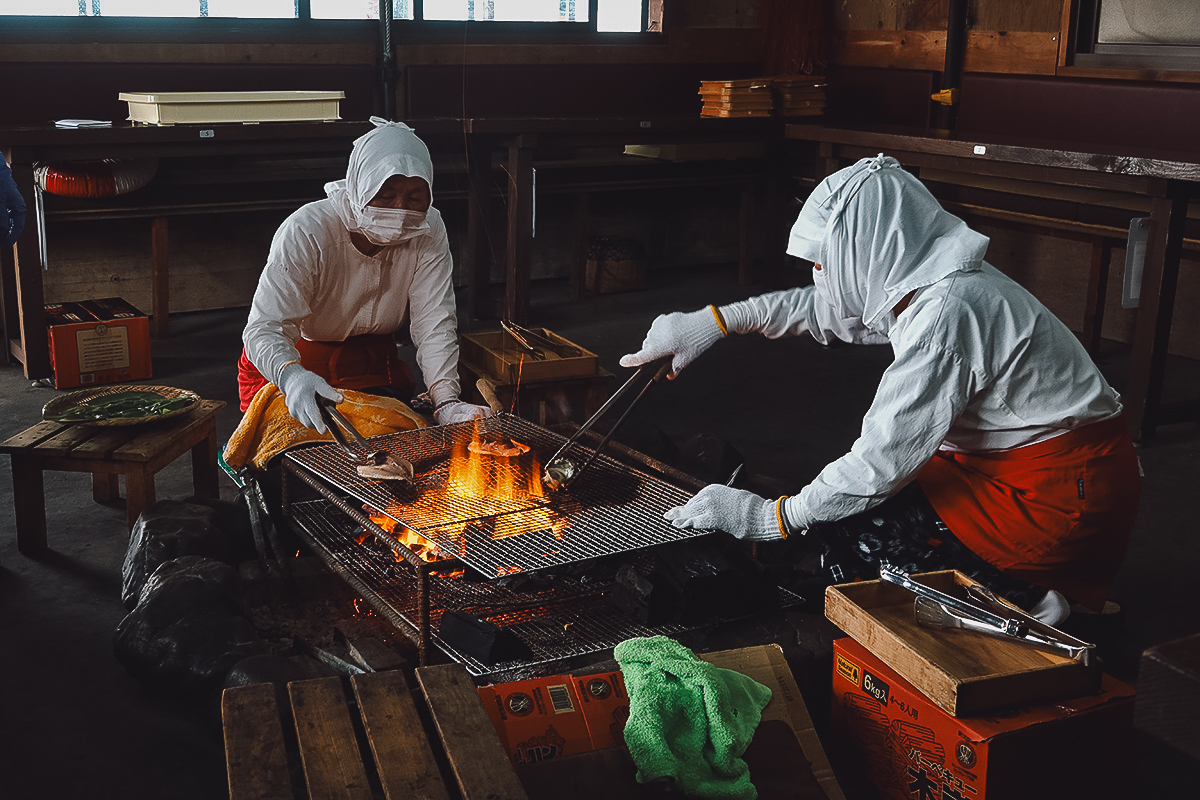
Ago Bay
After successfully cultivating the world’s first cultured pearl, Mikimoto established a pearl farm in Ago Bay. Located less than an hour south of Toba, this picturesque bay is known for its jagged coastline and scattering of small islands at the southern tip of the Shima Peninsula.
The main attraction here is a 1-hour sightseeing cruise aboard European-style ships, departing from Kashikojima – the bay’s largest island. 5-Day Pass Plus holders get a discount on sightseeing cruises so be sure to show your pass when purchasing a ticket.
Personally, I found the cruise a little underwhelming so I hopped on a train to Shima-Yokoyama Station and walked for around 45 minutes (each way) to the Yokoyama Observation Deck (pictured below). The panoramic views of Ago Bay are much more impressive from up here.

Yunoyama Onsen
If you’re traveling to Nagoya with the Kintetsu Rail Pass, then you may want to make a quick detour to relax in the healing waters of Yunoyama Onsen. Nestled near Mt Gozaisho in Mie Prefecture, this historic hot spring town has been welcoming visitors for over a thousand years.

Photo by しんかわな, CC BY-SA 3.0, via Wikimedia Commons / Processed in Photoshop and Lightroom
Nagoya
Like Kyoto, the Kintetsu rail network is limited in Nagoya. The Kintetsu-Nagoya Line only goes as far as Nagoya Station, making the pass less suitable for exploring the city.
Having said that, if your goal is to travel between the Kansai and Chubu regions, then using the pass to get from Osaka to Nagoya (or vice versa) may be a smart way of using the pass. While the one-way fare won’t justify the cost of the 5-Day Pass Plus on its own, you can maximize its value by stopping at various sightseeing spots along the way.

Photo by Tonic Ray via Shutterstock
KINTETSU RAIL PASS FAQs
How do I use the Kintetsu Rail Pass?
The Kintetsu Rail Pass is a digital pass* so you’ll need a smartphone and a reliable wifi connection to use it. If you purchased the pass through Klook, then you can access it through the Klook app.
You can refer to this article on the Kintetsu website for information on how to activate and use the digital pass. It’s very easy to use.
For Kintetsu trains, you’ll need to scan a QR code every time you enter and exit a station. Not every gate has a scanner so you’ll need to go through the gates that do**. For buses, the IGA railway, and facilities with benefits, you can just show operators or staff your digital pass.
*It’s worth mentioning that some versions of the pass are available as physical tickets at select stations in Osaka, Kyoto, and Nagoya. They cost a little more than digital tickets but provide no additional perks or benefits.
**If you enter or exit a Kintetsu station within the coverage area that doesn’t have any scanners, then you can just show your pass to staff. I experienced this in one or two of the smaller stations in Nara.
Is it worth getting the 5-Day Pass Plus over the 5-Day Pass?
It depends on where you want to go. In my case, it definitely was, especially in the Shima Peninsula. Not only did it give me more transportation options, but some of the places I went to – like Matoya Bay – were accessible only by bus.
Are limited express trains worth it?
Limited express trains have reserved seating while non-limited express trains are first-come, first-served. Limited express trains are also a little faster and seem to run more frequently than non-limited express trains.
I didn’t ride any limited express trains but to be honest, I never felt like I needed to. Traveling light during the shoulder season, I had a flexible schedule so I had the freedom to wait for non-limited express trains. I also found non-limited express trains to be comfortable enough, even on two-hour journeys.
Having said that, people traveling during peak seasons may want guaranteed seats. If you don’t want to risk being left standing on a packed train, then getting limited express tickets is a good idea.
How do I purchase limited express tickets?
You can purchase limited express tickets at the station or online through the Kintetsu website.
How do I know which train routes are operated by Kintetsu Railways?
You can use Google Maps for this. Just plot your journey on Google Maps. After selecting a route, click on “Details” and scroll down to find the name of the operating company*.
Take note that routes with transfers may be operated by more than one rail company, so you’ll need to take a route that’s run entirely by Kintetsu Railways.
*The operating company’s name may be in kanji. If that’s the case, then click on the link and scan the website to determine the operator.
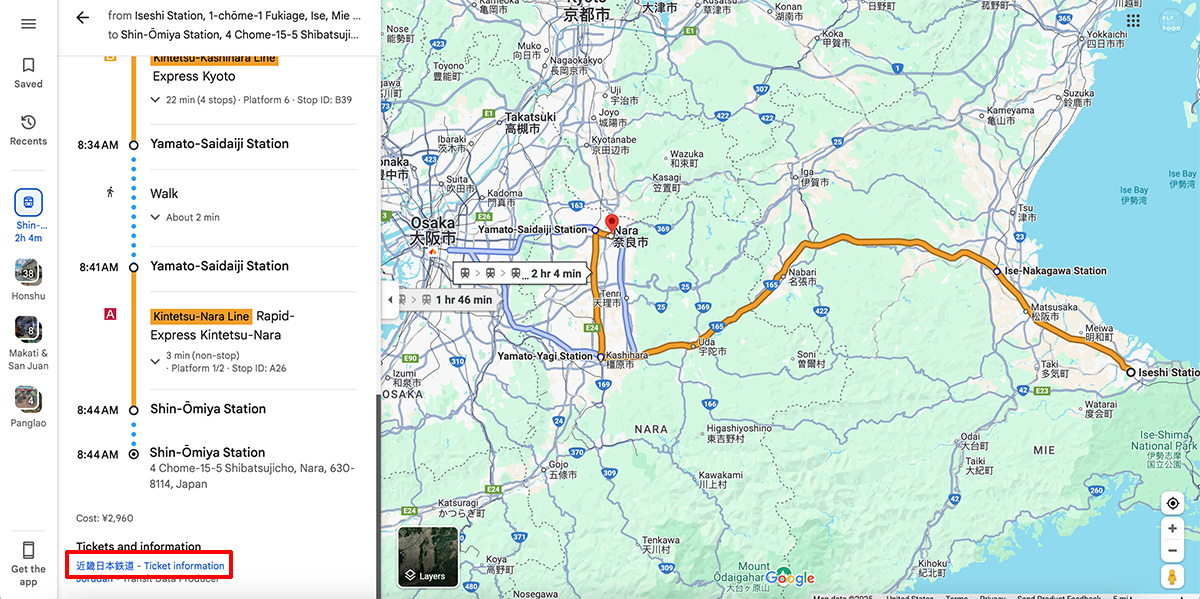
How do I know which local buses I can ride with the 5-Day Pass Plus?
You can follow the same method on Google Maps. If the bus is being operated by Nara Kotsu, Mie Kotsu, or Toba City, then you can use your Kintetsu Rail Pass to ride it (except the 5-Day Pass).
In my experience, every bus I took in Ise, Toba, and Nara was part of the network. If you’re unsure, then you can show your pass to the driver immediately after boarding to confirm.
Where can I get more information?
If you need more information about the Kintetsu Rail Pass, then you can visit the Kintetsu website.
IS THE KINTETSU RAIL PASS WORTH IT?
Like any rail pass in Japan, it depends on how often you use it. Let’s break it down per version.
1-Day Pass
The 1-Day Pass costs JPY 1,900 and offers limited coverage. If you use it just for a roundtrip between Osaka and Nara, then you won’t recoup the cost of the pass.
However, if you use it for a roundtrip between Osaka and Kyoto’s Fushimi sake district and/or the Nintendo Museum, then the pass will be worth it.
2-Day Pass
The 2-Day Pass costs JPY 3,700. A roundtrip from Osaka to central Nara on one day, and another to southern Kyoto on the next, won’t be enough to offset the cost of the pass.
You’ll need to visit more distant destinations in Nara, like Hasedera or Mt Yoshino, to make it pay off.
5-Day Pass
I used the 5-Day Pass Plus. The 5-Day Pass costs JPY 4,900 and has the same coverage area as the 5-Day Pass Plus, but it doesn’t include travel on local buses.
Even if I didn’t ride any buses, the total cost of my train transportation without the pass would have been JPY 8,570. That would have been more than enough to recoup the value of the 5-Day Pass. In fact, even the train fare for a single day trip between Osaka and Ise is almost enough.
However, not having access to the local bus networks would have limited my transportation options, to some degree in Nara but especially in Ise-Shima.
Oharaimachi Street and the Inner Shrine of Ise Jingu, the most important attraction in Ise, are roughly 3 km (1.9 miles) from the nearest Kintetsu station. Another key attraction – Meoto Iwa – is over 5 km (3.1 miles) from Kintetsu Ikenoura Station. Futaminoura Station is within walking distance of Meoto Iwa, but it’s a JR station and can’t be accessed using the pass.
If you plan on using the pass to explore Ise-Shima, then it’ll be much easier for you to get around using the 5-Day Pass Plus.
5-Day Pass Plus
I used the 5-Day Pass Plus to explore Nara and the Shima Peninsula. I started in Iga Ueno and made my way to Ise, Toba, Matoya Bay, and Ago Bay. From Ise-Shima, I traveled to Nara. I visited Nara City and made day trips to Mt Yoshino, Hasedera, Tenri, and Imaicho.
The 5-Day Pass Plus costs JPY 6,700. Without it, I would have spent JPY 13,260 on transportation – JPY 8,570 on trains and JPY 4,690 on local buses. I saved an additional JPY 430 on admission, bringing my total savings up to JPY 6,990. That’s more than double the value of the pass!
Even though I was active, I didn’t take any trips I didn’t want to make just to extract as much value as I could from the pass. I stayed two nights in Ise and three nights in Nara, and I visited many of the sights that most first-time visitors will probably want to visit.
As long as you use the 5-Day Pass Plus to make at least one roundtrip from Osaka or Kyoto to more distant destinations like Ise or Nagoya, then the pass should pay off for you.
Disclosure
Some of the links in this article on the Kintetsu Rail Pass are affiliate links, meaning we’ll get a small commission if you make a purchase at no added cost to you. We only recommend products and services that we use ourselves and firmly believe in. We really appreciate your support as this helps us make more of these free travel guides. Arigato gozaimasu!
References
1. Korteman, Jessica (2022, February 1). A sake tour of Japan: Get a taste of the nation’s best nihonshu. Lonely Planet.
2. Nintendo Museum. japan-guide.com.
3. Hasedera Temple. japan-guide.com.
4. Sacred Sites and Pilgrimage Routes in the Kii Mountain Range. UNESCO World Heritage Convention.
5. Amaterasu. Wikipedia. (2002, February 15).
6. Kokichi Mikimoto. Wikipedia. (2002, August 2).
7. Ama (diving). Wikipedia. (2004, June 4).
8. Cartwright, Mark (2012, December 6). Izanami and Izanagi. World History Encyclopedia.
